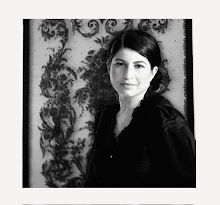I interviewed Paul Auster at his home in Park Slope, Brooklyn today. Here are a few of his thoughts:
NR: Your latest novel, Man in the Dark feels so visual. Why is that?PA: Good. I’ve always been striving to achieve that effect. I’ve always wanted to write a book whose language would be so transparent that the reader would forget that the medium is words and just be inside the story.
NR: Can you take a break from your work, say to travel?PA: The problem with leaving a book is that you stop believing in it. There’s some kind of state that you get yourself into when you’re working where everything that is imaginary becomes real. But as soon as you step back from that, the illusion bursts, and you have to work yourself back into it and it takes time. When I traveled over the summer, I just clung desperately to what the next sentence was going to be, I tried to keep it in my head, but when I got back it took me a good ten days or so to feel the rhythm of it.
NR: Are you ever influenced by what you read while you write?PA: I never read fiction while I write fiction. I just can’t. I find that living in my imaginary universe all day, I need to get into the real world. Somehow it’s a stabilizing force. When I’m reading I’m reading for the most part biography, history, books about science, politics but not fiction. Between novels I try to catch up.
NR: Who do you read?PA: Well, there are certain people that I read faithfully and I suppose these are the ones that mean the most to me. He died recently but Ryszard Kapuscinski is a writer who I read faithfully. Everytime he published a book I would go out and buy it. JM Coetzee. Everytime he publishes a book, I go out and I read it. Don DeLillo, I read every one of his books. Peter Carey, I’ve read every one of his books.
NR: He's dead, but what about Hawthorne.I’ve read all of Hawthorne. He’s…I don’t know why he’s so important to me but I just love his work. I love his mind. I love what he did for American literature. He is just a stupendously great writer. Did you ever see the little book I put together for New York Review Books, the Hawthorne. It’s called
Twenty Days with Julie and Little Bunny by Papa. And it’s something from Hawthorne’s notebooks. But it’s a self-contained text. About 50 or 60 pages. I wrote along essay introducing it. It’s in my collected prose.
Hawthorne at Home. It was when Hawthorne move to the Berkshires in 1861. He had published
The Scarlett Letter the year before and
House of the Seven Gables had just come out and so he was at the top moment of his life as a writer and as a father and a husband. He was about 47 years old and for the first time in his life he was making his living through writing. And he and his wife rented a house in Lennox and they had two children, Oona, a girl, and Julian, a boy. They were about 7 and 5 and then they had a baby not long after they moved in. Rose. When Rose was born, Hawthorne’s wife Sophia took the two girls to the outskirts of Boston to visit her parents for two weeks. And Hawthorne was left alone in the house with this 5-year-old boy. There was some cook who came into the house to do work but essentially he was in charge of taking care of the kid. And I think it’s the first account in history of a man taking care of a child alone. He kept a very meticulous diary, day by day, of what he and the boy did. And how annoying the boy was and how he never stopped pestering him with his questions and his antics and what’s very moving about this piece to is that this is when he and Melville became friends and now Mellville who was living just six miles down the road in Pittsfield, finishing
Moby Dick. I mean it was quite a moment. And there’s a great passage of Melville coming to visit and the two of them sitting up late into the night, smoking cigars and drinking and just talking about everything. It’s a great moment in American literature that passage. That’s one element of Hawthorne. The part that nobody knows. The very droll and bemused person. He was a writer of tremendous depth and psychological acuity. And in a sense I think unlike Hemingway who said all American literature comes out of one book –
Huckleberry Finn – I beg to differ. I think it’s
The Scarlett Letter which was published 30-something years before Huckleberry Finn.
NR: Man in the Dark is your most political book since Leviathan. What are your political views?PA: Can I say this in one sentence? One wants humanity to be better. I think it’s within our capabilities to do better, so I keep hoping. I’m ever in despair and yet I keep hoping that things will get better.
Man in the Dark is published August 19.





